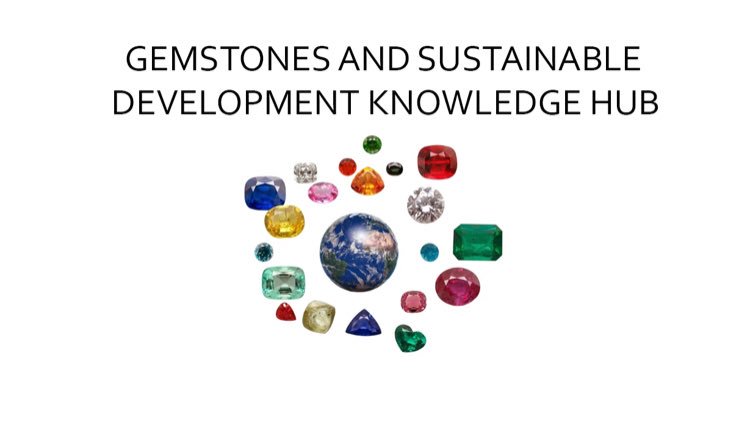The Gemstones and Sustainable Development Knowledge Hub – a project launched in 2017 by the University of Delaware, The University of Queensland and the University of Lausanne are working towards transparency in the jewellery industry.
At the same time, working towards transparency can be a real collaborative effort between consumers, NGOs, retailers, designers and brands if they pool their knowledge.
This is the aim of the Gemstones and Sustainable Development Knowledge Hub – which comprises an online library so people can access articles, research and initiatives concerned with making the jewellery industry more sustainable.
“We are trying to get the information together, make it more approachable for consumers and get the discussion going,” explains Dr. Cartier, co-founder of the Hub.
“It's not just the corporation that can make a difference,” agrees Péan. “If consumers ask the right questions, we'll start to see a change.”
As the jewellery industry wakes up to the impact it’s having on the environment, Vogue speaks to luxury brands, independent designers and industry experts to see what can be done to make the trade more sustainable.
Even the simplest of gold bands involves processes that can span continents, making traceability one of the toughest challenges the jewellery industry is facing in its effort to become more sustainable. When diamonds, gemstones or other metals are added to the mix, it becomes even more difficult to create origin-assured designs.
“There is no one-stop shop for an ethical, sustainable piece of jewellery,” explains Dr. Laurent E. Cartier, a lecturer in gemmology at the Institute of Earth Sciences at the University of Lausanne. For that reason, NGOs, industry organisations and jewellery brands are tackling environmental and humanitarian issues on a case-by-case basis – focusing on specific materials, supply chains and meaningful ways to give back to the most affected communities.
Increasing awareness
Since the 2006 release of Blood Diamond – the Hollywood film that sent shockwaves through the jewellery industry by exposing the prevalent corruption in the mining and trade of diamonds – consumer awareness has continued to increase, forcing the industry to be more transparent about its practices. “You can vote with your pocketbook,” says Payal Sampat, director of international and mining programs at Earthworks. The non-profit organisation led the way with the launch of the No Dirty Gold campaign in 2004, one of the first movements to bring awareness to customers and retailers about the environmental and human impact of gold mining.
Looking for clean gold
Mining for gold, one of the most widely used materials in jewellery, has resulted in the displacement of indigenous communities from gold-rich regions, and the pollution of waterways due to the spillage of chemicals like cyanide and mercury, which are used to separate gold from ore. Now the industry is making an effort to clean up its act by certifying gold that meets international sustainability standards.
Man-made diamonds
In line with the growing scepticism regarding the efficacy of the Kimberley Process, more designers are turning to man-made stones. These options have a number of benefits: they require less human labour, have a reduced carbon footprint, are indistinguishable from their natural counterparts and come with a significantly lower tag price. “If you're defining ethical as knowing the source of a gemstone, then [lab-grown stones] are an ethical option,” says Lebrusan, who uses artificial diamonds on occasion. At the same time, the designer warns against using artificial stones exclusively, which could deprive entire mining communities of their livelihood.
Source: VOGUE AUSTRALIA, 'How the jewellery industry is cleaning up its act'




